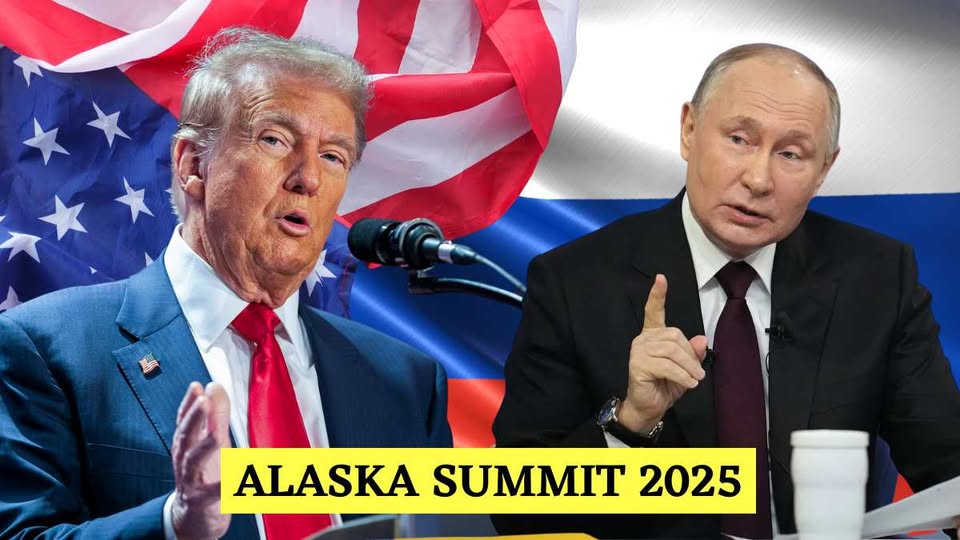Did Donald Trump Get Steamrolled by Vladimir Putin at the Alaska Summit?

The Alaska Summit of 2025, where former President Donald Trump met Russian President Vladimir Putin, has sparked heated debate over whether Trump was outmaneuvered by his Russian counterpart. As a political observer, I believe the evidence suggests Trump walked away from the summit at a disadvantage, not because of any overt capitulation, but due to Putin’s strategic acumen and Trump’s predictable approach to high-stakes diplomacy. Let’s unpack the dynamics of this encounter and why it’s hard to argue Trump came out on top.
First, some context. The Alaska Summit was billed as a critical meeting to address escalating tensions over Ukraine, NATO expansion, and energy markets. Both leaders had much to gain—or lose. Trump, positioning himself as a dealmaker extraordinaire, promised to secure concessions from Russia while projecting strength. Putin, a seasoned geopolitical chess player, arrived with a clear agenda: to solidify Russia’s influence while exploiting any cracks in Western unity.
From the outset, Putin’s approach was calculated. Reports from the summit indicate he dominated the narrative, framing discussions around Russia’s “legitimate security concerns” while sidestepping accountability for ongoing aggression in Ukraine. Trump, by contrast, leaned heavily on his trademark bravado, touting personal rapport and vague promises of “great deals.” But rhetoric isn’t results. The joint statement released post-summit was notably light on specifics—no concrete commitments on troop withdrawals, no firm agreements on sanctions relief or energy cooperation. This ambiguity benefits Putin, who thrives in gray zones where Russia can act without binding constraints.
One key moment underscores the imbalance: the discussion on Nord Stream 2. Trump reportedly pushed for increased U.S. liquefied natural gas exports to Europe as a counter to Russian energy dominance. Putin, however, deflected with ease, offering vague assurances about “market competition” while securing tacit acknowledgment of Russia’s role in global energy markets. This was a win for Putin—maintaining Russia’s leverage without conceding ground. Trump’s failure to pin Putin down on specifics suggests he underestimated the Russian leader’s ability to dodge and weave.
Another point of contention was Ukraine. Trump’s public remarks emphasized “peace” and “deals,” but lacked the granular demands—such as a clear timeline for Russian withdrawal from occupied territories—that could have pressured Putin. Instead, Putin reportedly steered the conversation toward a “neutral” Ukraine, a long-standing Russian talking point that weakens NATO’s cohesion. By not forcefully countering this narrative, Trump allowed Putin to frame the issue on Moscow’s terms, a diplomatic misstep that emboldens Russia’s regional ambitions.
Critics of this view might argue Trump’s approach was pragmatic, avoiding escalation with a nuclear power. They could point to his post-summit claims of “resetting” U.S.-Russia relations as evidence of success. But this argument falters when you consider the optics and outcomes. Putin left Alaska projecting strength, with Russian state media hailing the summit as a validation of Moscow’s global clout. Trump, meanwhile, faced domestic criticism for appearing too conciliatory, with no tangible wins to show for it. The lack of enforceable agreements or measurable progress tilts the scales in Putin’s favor.
This isn’t to say Trump was entirely steamrolled. He avoided major gaffes and maintained his base’s perception of him as a tough negotiator. But perception isn’t substance. Putin’s track record shows he excels at exploiting leaders who prioritize spectacle over strategy. Trump’s reliance on personal charisma and deal making rhetoric played into Putin’s hands, allowing the Russian leader to control the summit’s tempo and walk away with more strategic flexibility.
In the end, the Alaska Summit wasn’t a knockout blow for Trump, but it was a clear points victory for Putin. The Russian president secured what he wanted: a platform to project power, no binding commitments, and a chance to sow doubt in Western resolve. Trump, for all his bluster, left with little to show beyond a photo-op and a vague promise of future talks. If this was a deal making masterclass, it was Putin, not Trump, who taught it. The question now is whether Trump—or the West—can recalibrate before the next round.